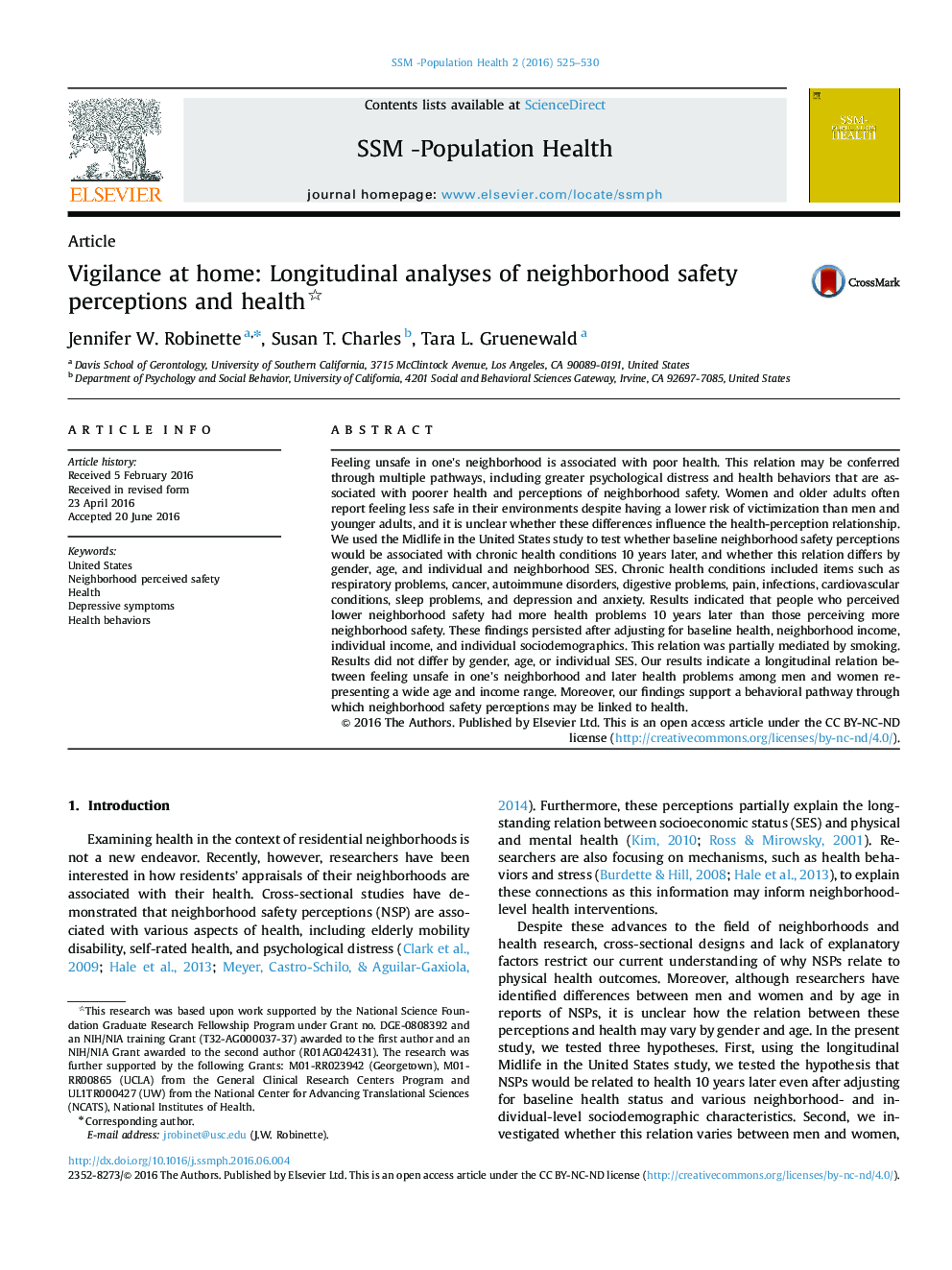| Article ID | Journal | Published Year | Pages | File Type |
|---|---|---|---|---|
| 1092359 | SSM - Population Health | 2016 | 6 Pages |
•Men and women reporting lower neighborhood safety have more health problems after 10 years.•This relation persists across wide ranges of age and socioeconomic status.•This relation is partially explained by smoking.
Feeling unsafe in one's neighborhood is associated with poor health. This relation may be conferred through multiple pathways, including greater psychological distress and health behaviors that are associated with poorer health and perceptions of neighborhood safety. Women and older adults often report feeling less safe in their environments despite having a lower risk of victimization than men and younger adults, and it is unclear whether these differences influence the health-perception relationship. We used the Midlife in the United States study to test whether baseline neighborhood safety perceptions would be associated with chronic health conditions 10 years later, and whether this relation differs by gender, age, and individual and neighborhood SES. Chronic health conditions included items such as respiratory problems, cancer, autoimmune disorders, digestive problems, pain, infections, cardiovascular conditions, sleep problems, and depression and anxiety. Results indicated that people who perceived lower neighborhood safety had more health problems 10 years later than those perceiving more neighborhood safety. These findings persisted after adjusting for baseline health, neighborhood income, individual income, and individual sociodemographics. This relation was partially mediated by smoking. Results did not differ by gender, age, or individual SES. Our results indicate a longitudinal relation between feeling unsafe in one's neighborhood and later health problems among men and women representing a wide age and income range. Moreover, our findings support a behavioral pathway through which neighborhood safety perceptions may be linked to health.
